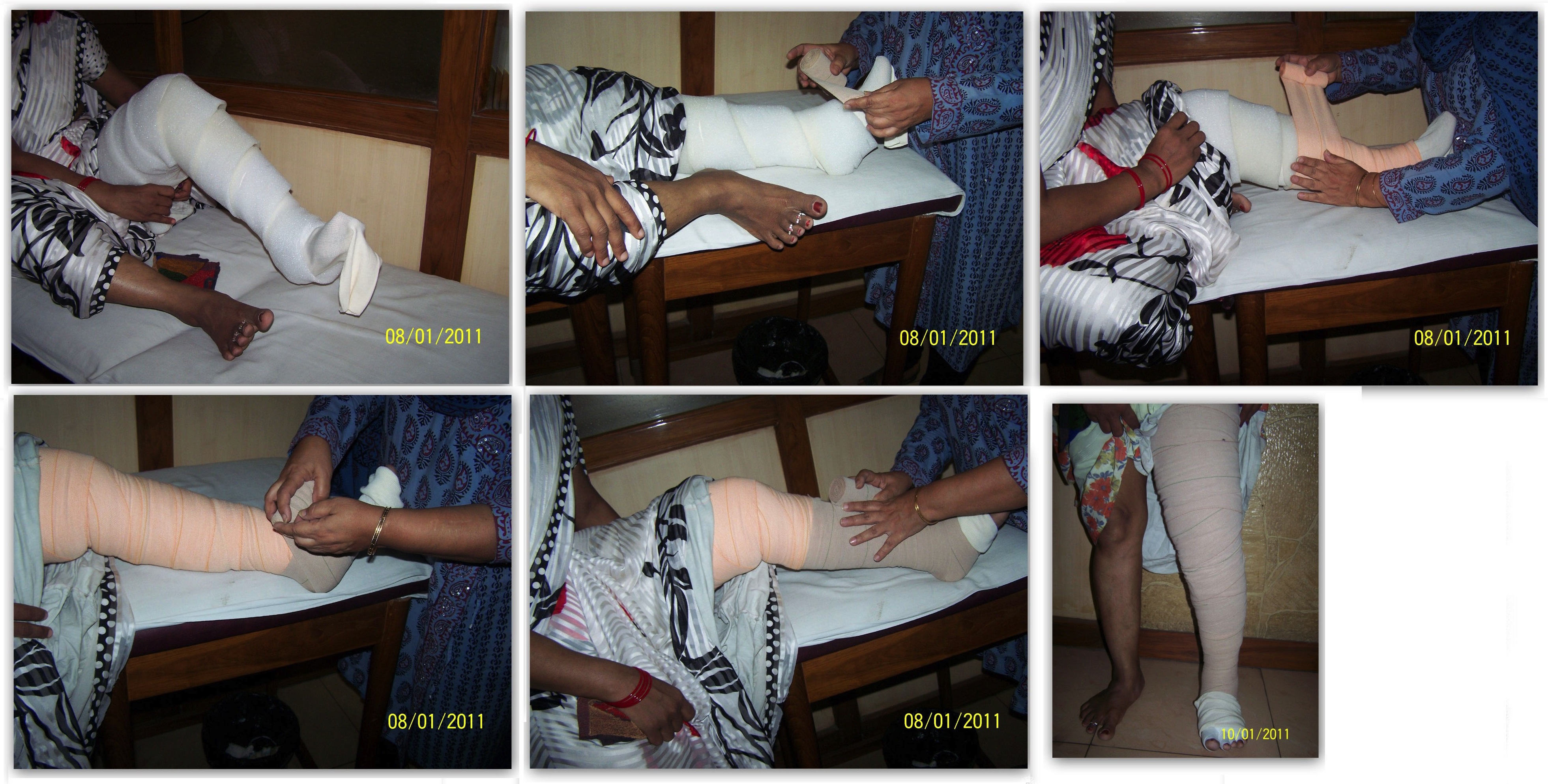Correct bandaging Technique
Multi-layer bandaging therapy is used in the intensive phase of of CDT in order to achieve significant reduction of limb girth. Compression bandaging is indicated to reduce limb volume, improve limb shape, enhance or protect the condition of the skin and tissues, and manage symptoms such as lymphorrhoea. Outcomes vary from fair to good depending on the technique and capabilities of the person applying the bandage.Conventionally, four different layers of bandages are wrapped around the limb. An effective multi-layer bandaging system will provide adequate pressure to reduce swelling while allowing for natural movement without causing tissue damage, allergy or altered sensation. There is evidence that multi-layer compression bandaging is more likely to produce a graduated pressure profile in lymphoedema than single-layer bandaging. A graduated compression profile will push the fluid up and prevent its backflow.

Central to the efficacy of any bandaging system is the ability to combine scientific theory with the skilled art of bandage application after assessment of individual patient needs and circumstances. Inadequate pressures will have little effect on healing, and incorrect bandaging techniques, where very high sub-bandage pressures are obtained, could have a detrimental effect on the patients’ limb and result in pressure necrosis and amputation.
At our clinic, we offer a 10-day intensive treatment regimen, where bandaging is done for the patient by a trained therapist. The patient is then trained on the bandaging technique for the maintenance of limb reduction.
See our Results
